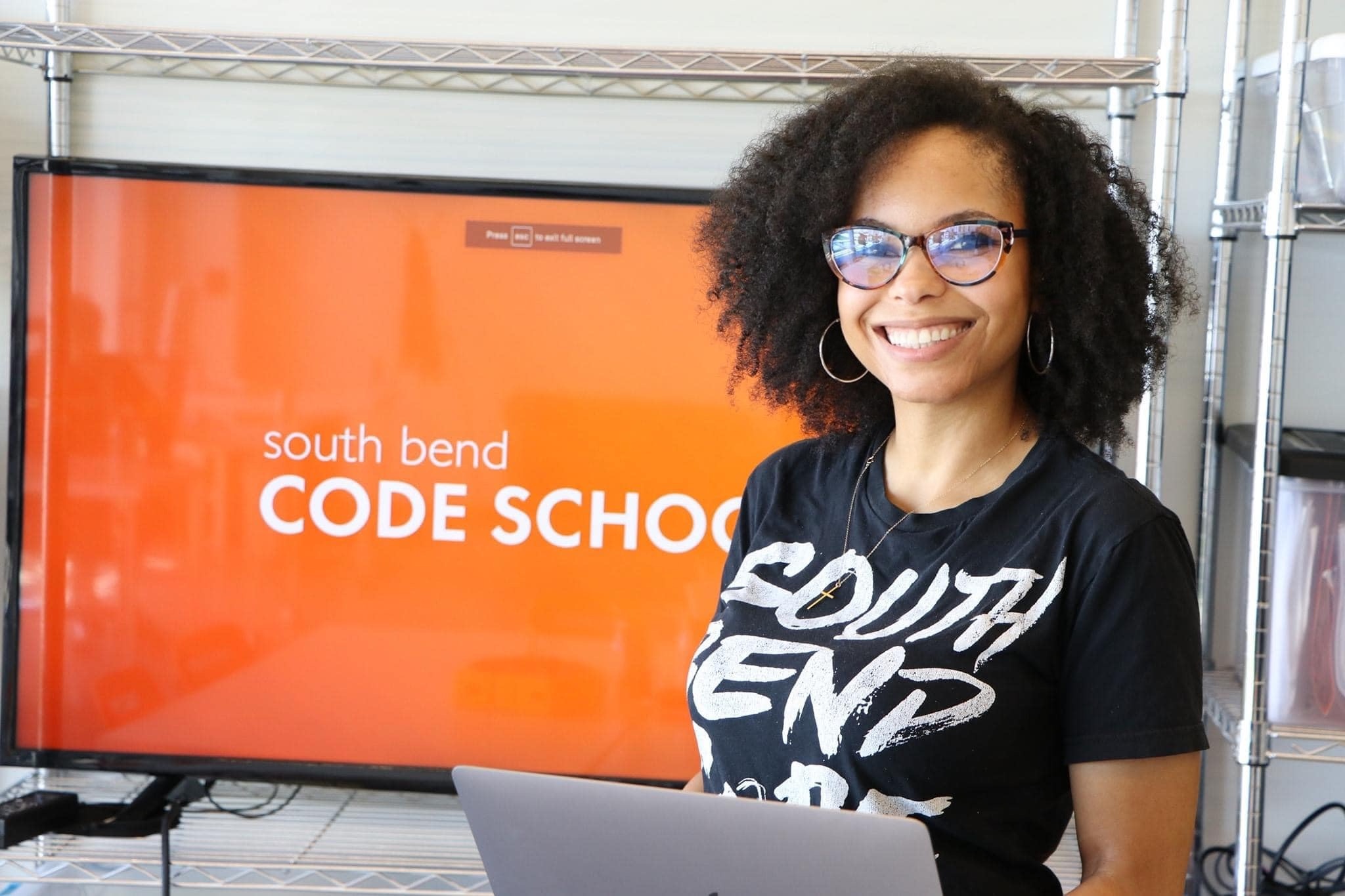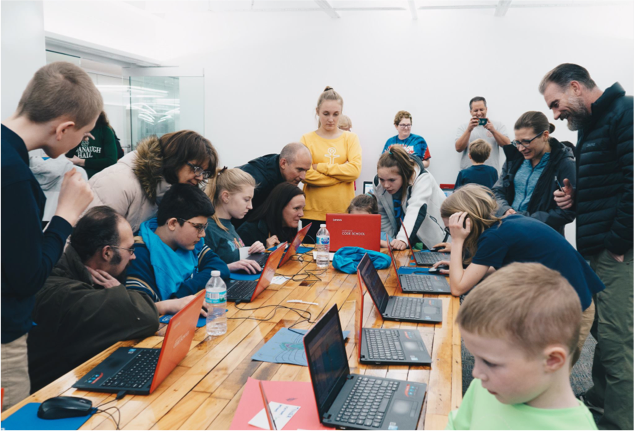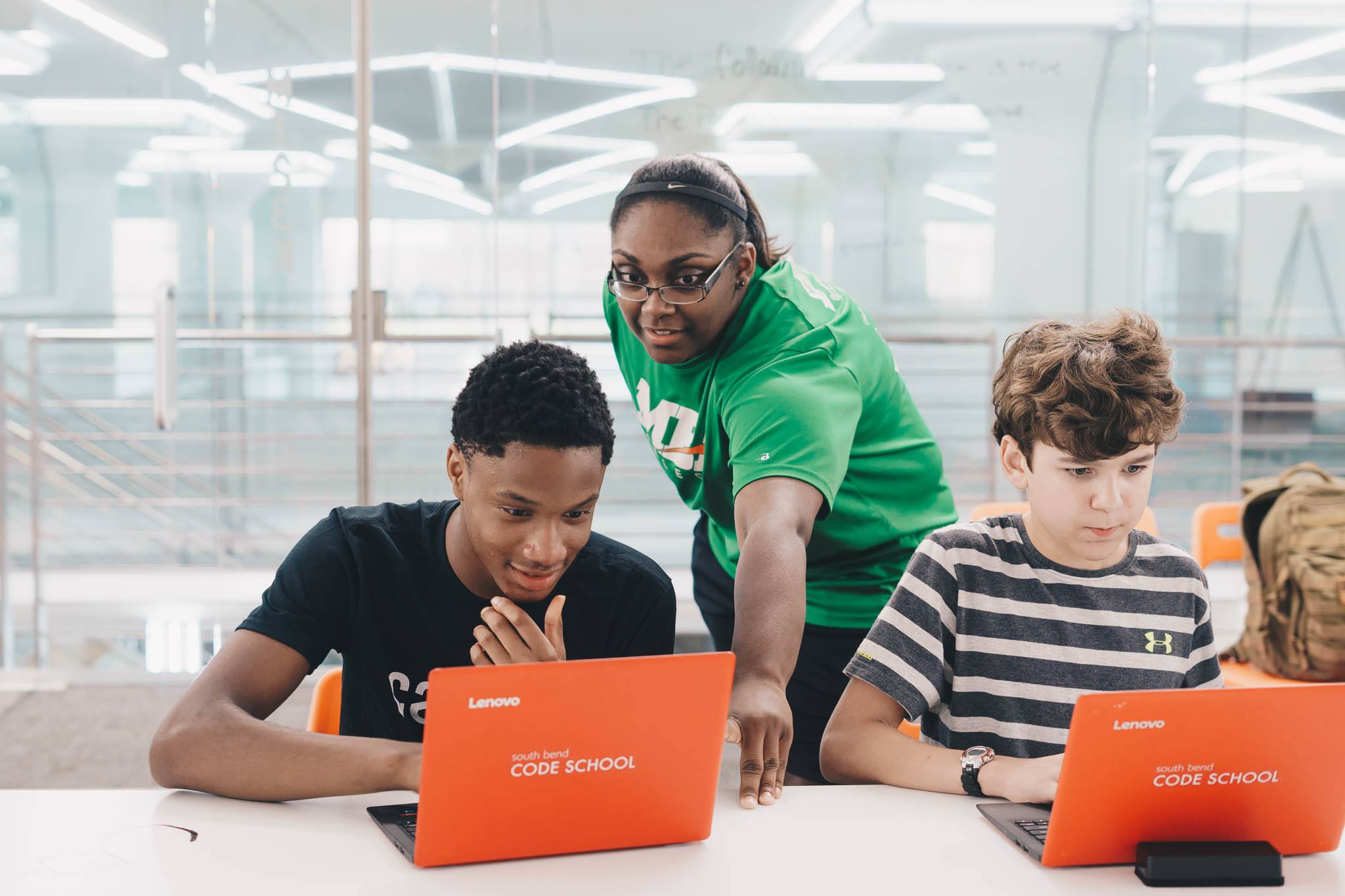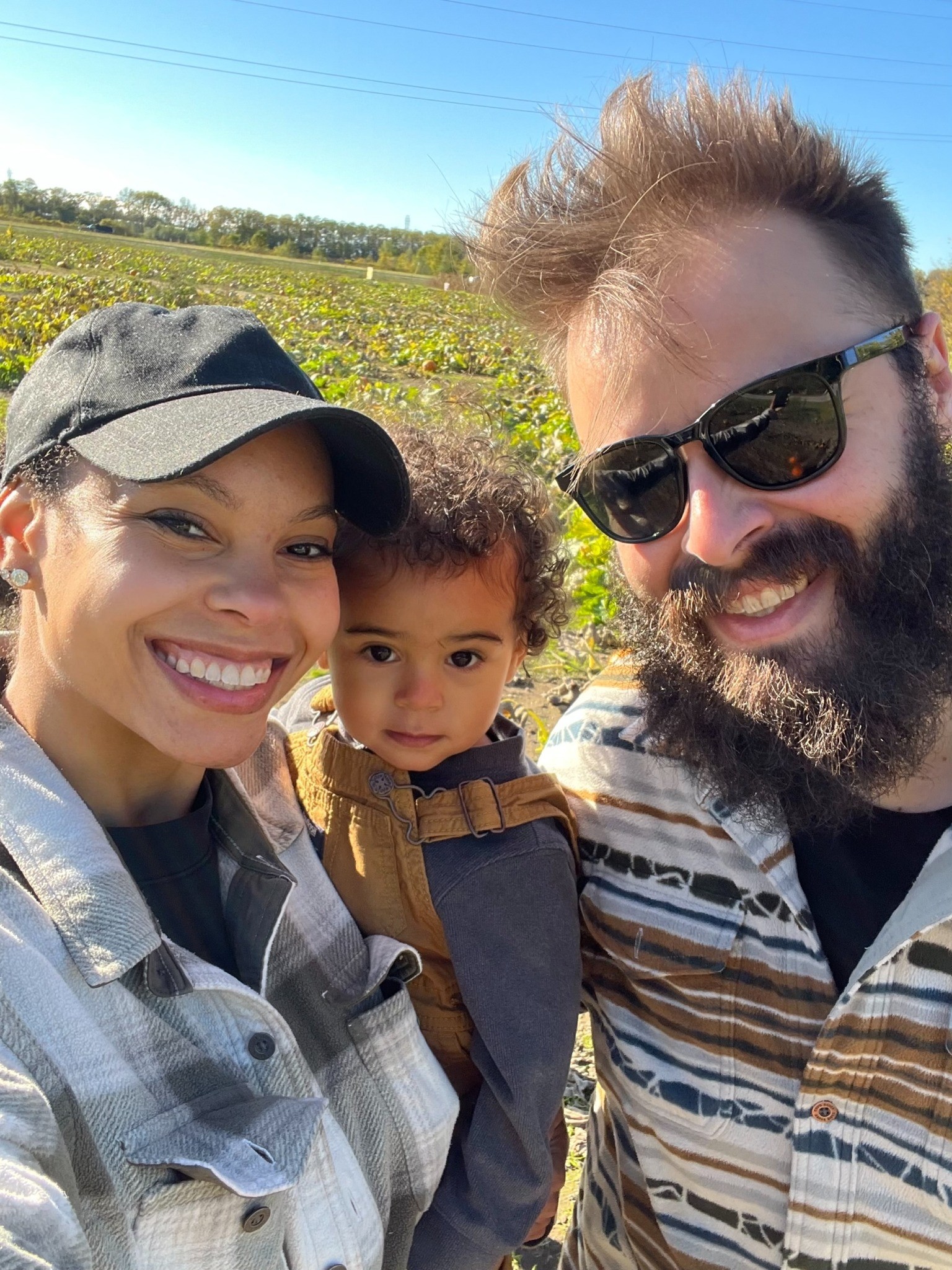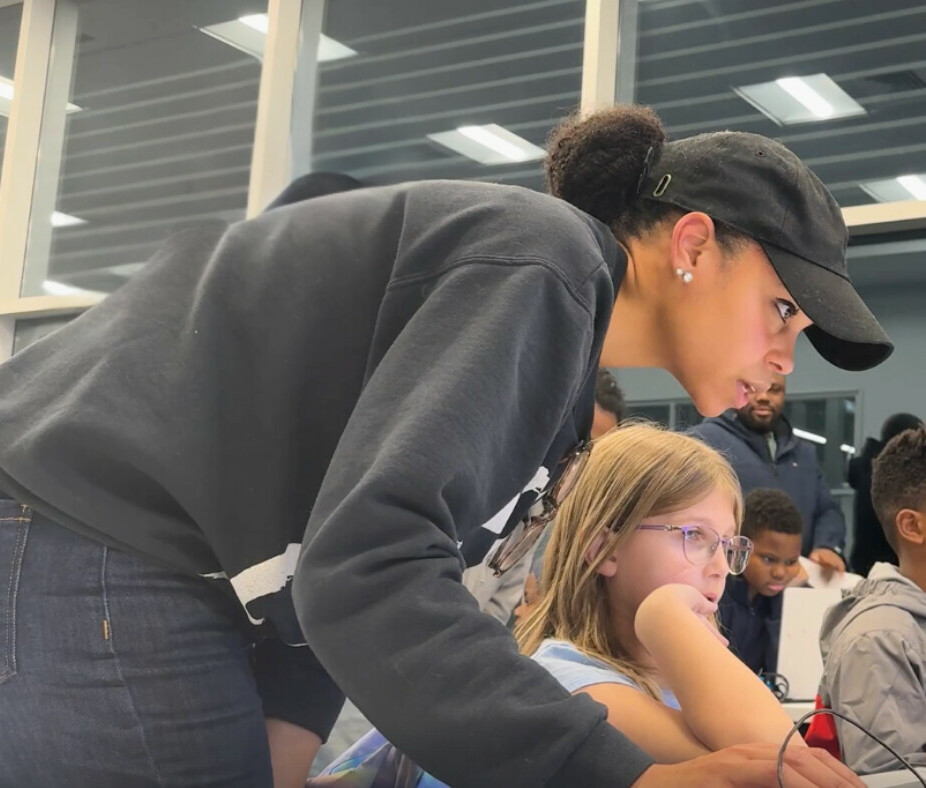Alright – so today we’ve got the honor of introducing you to Alex Sejdinaj. We think you’ll enjoy our conversation, we’ve shared it below.
Alright, Alex thanks for taking the time to share your stories and insights with us today. What was it like going from idea to execution? Can you share some of the backstory and some of the major steps or milestones?
I’ve always wanted a career that allowed me to help people, but for a long time, I didn’t know what that would look like. Growing up, I thought I’d become a doctor—until my junior year of college when I realized medicine wasn’t my path. That left me feeling lost, unsure of what I was supposed to do next.
One day, while tutoring local high school students, I met seniors with no plans after graduation—not because they lacked ambition, but because they didn’t see a path forward without a college degree. That resonated with me because, at the time, I felt the same way.
Sitting in the library, I Googled “careers without a college degree,” and coding was the first thing that popped up. That was my lightbulb moment.
I started teaching myself how to code through free online courses and meeting with computer science majors to figure out what I needed to learn. But I didn’t want to stop at just learning it—I wanted to teach others.
To test the idea, I partnered with a local community center and hosted a free one-hour coding session for middle schoolers. They loved it and wanted more, which confirmed that there was a real need in the community.
That’s when I teamed up with Alex Sejdinaj and Chris Frederick, two experienced developers, to build South Bend Code School. Together, we created a project-based curriculum that allowed students to build real-world projects—like a graffiti tag finder that used geolocation to track areas of high tagging, helping the city identify crime hotspots.
Our first official coding program led to more opportunities—including partnerships with local organizations and a program inside the Juvenile Justice Center to teach coding to youth in detention. Within a year, we launched our first open-enrollment after-school program, allowing students from all over the region to learn to code.
Today, South Bend Code School has educated over 700 youth and expanded to include adult and educator training programs. And it all started because of one conversation with my academic advisor—who reminded me that finding purpose is often about helping others.
My biggest lesson? Just start. You don’t need all the answers. Solve one problem at a time, be willing to adapt, and take the first step.
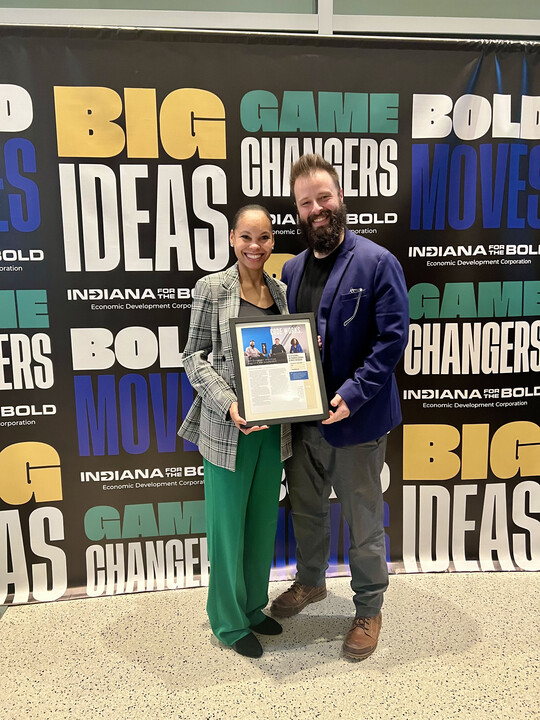
Alex, before we move on to more of these sorts of questions, can you take some time to bring our readers up to speed on you and what you do?
I’m Alex Sejdinaj—a wife, a mom, and an entrepreneur who never set out to be one. I wouldn’t call myself an “entrepreneur’s entrepreneur.” I’m not chasing the latest trends or crafting the perfect pitch deck. My journey into tech wasn’t about business—it was about people.
I moved to South Bend for college, attending the University of Notre Dame, but I’m originally from Atlanta, Georgia. In my junior year, I had a moment that changed everything for me. I was tutoring high school seniors who weren’t planning to go to college—not because they lacked ambition, but because they didn’t see a clear path forward. They were being told that without a degree, their career options would be limited. That didn’t sit right with me because I too felt lost at the time.
So, I Googled “careers without a college degree” and saw coding at the top of the list. That was my lightbulb moment. I realized that learning to code could provide these students with real career opportunities, so I taught myself how to code—so I could teach them.
That decision led to the creation of my first company, South Bend Code School (SBCS), which I co-founded with my husband, Alex Sejdinaj. SBCS is about accessibility—making tech education available to everyone, regardless of background or financial resources. We provide tech training for youth, adults, and educators through hands-on, project-based learning. Since launching, we’ve introduced thousands of learners across Indiana and Michigan to computer science through free and scholarship based programs.
As SBCS grew, I saw another need—technology should be used to support communities That led to the creation of Code Works, a digital product studio where technology meets social good. We work with companies of all sizes to develop software solutions, automation tools, data analytics, branding, and more—always with an emphasis on accessibility and impact.
One of my favorite initiatives is our Digital Storefront Grant Program, a partnership with the City of South Bend that provides free websites, branding, and backend solutions to small businesses, majority of which are women- and minority-owned. For many of these entrepreneurs, technology can be overwhelming or financially out of reach, and this program allows them to establish a strong online presence, streamline operations, and grow their businesses.
Through Code Works, we also built GiveGrove, an affordable, easy-to-use fundraising platform designed to help nonprofits run successful auctions and events. Since launching, GiveGrove has helped organizations raise over $12 million for causes that matter—providing nonprofits with the tools they need to focus on their missions, not their fundraising challenges.
At the core of all my work is a belief that technology should be equitable, inclusive, and a force for good. Our companies aren’t just about teaching people how to code or building digital products—they’re about breaking down barriers, creating opportunities, and ensuring that technology serves everyone, not just those who can afford it. My goal is to make technology accessible, human-centered, and empowering.
Along the way, I’ve been honored to be recognized as a Code.org Champion for Computer Science, a Women of Color STEM Award recipient, a University of Notre Dame Young Alumni Award honoree, and a 2024 Domer Dozen recipient. But more than that, what I’m most grateful of is the impact we’ve made in the community.
At home, my husband and I are raising our 1-year-old son, alongside our dog, Obi. Balancing motherhood and business ownership isn’t always easy, but I’m incredibly grateful for the opportunity to pursue both career and family.
I’m grateful for the journey that brought me here, and I’m excited to help others find their own paths in tech.

We’d love to hear about how you met your business partner.
The story of how I met my co-founder is one of my favorites. We started our businesses and our relationship at the same time, which I know wouldn’t work for everyone, but I’m grateful that it did for us.
We met in the summer of 2015 at the Robinson Community Learning Center in South Bend, a place dedicated to education and community impact. His name is Alex, and my name is Alex, which always makes introductions interesting. And now, we have a son—but thankfully, we didn’t name him Alex!
What first connected us wasn’t just our shared name, but that we both saw how access to quality tech education wasn’t equitable, and we wanted to change that. We started working together to build South Bend Code School, driven by the belief that learning to code should be accessible to everyone, regardless of background or financial resources.
Now, almost a decade later, we’ve built three tech companies, a nonprofit, and a family. God is good!

Have you ever had to pivot?
One of the biggest pivots I’ve had to make—both in life and in business—was when I became a mom.
Since launching our companies, I had never taken a real step back. I was deeply involved in every aspect of our businesses, from day-to-day operations to big-picture strategy. Then, in 2023, my son was born, and everything had to change.
I knew that motherhood would shift my priorities, but I wasn’t fully prepared for what that shift would feel like. After my son was born, I transitioned from full-time to part-time work—something I had never done before. It was hard. It still is.
For the first time, I wasn’t in the daily operations of our businesses. I had to trust my team in ways I hadn’t before. I had to let go of control and accept that I couldn’t be as hands-on as I once was. That was an adjustment.
I had spent so much of my life striving, pushing forward, and pouring into my work. But now, God was calling me to a different kind of faithfulness—one that required me to slow down, to trust Him with my work, and to fully embrace the new role He blessed me with as a mother.
And I’m still in this pivot. Balancing part-time work and full-time motherhood often feels impossible—like there just aren’t enough hours in the day. There are moments when I feel stretched thin and others where I wonder if I’m giving enough to either role. I’m still figuring it out.
But if there’s one thing I’ve learned from pivoting in business, it’s that change is constant. Just like in our companies, where we’ve had to adjust, scale, and refine what we do, parenthood has required me to shift, reimagine, and redefine what my day to day looks like.
Right now, success looks different than it used to. It’s about learning to be present, trusting God, and trusting my team.
While I don’t have it all figured out yet, I’m embracing this pivot as part of the journey.
Contact Info:
- Website: https://southbendcodeschool.com
- Instagram: https://www.instagram.com/galexsej/
- Facebook: https://www.facebook.com/alex.southbendcodeschool
- Linkedin: https://www.linkedin.com/in/alex-sejdinaj-205aa26a/

